"GENERAL KNOWLEDGE FOR THE WORLD OF SCIENCE"

Inventions of daily life
Inventors within the eighteenth century worked to form life easier. writer (1706-1790) introduced central eyeglasses and a stove that warm a full area. The three-color print method and wood-pulp paper brought North American country newspapers, magazines, and wallpaper. The piano was fictional so was java. Joseph Priestley (1733-1804) gave North American country soda water. a preferred appetence for comfort, convenience, and amusement was created that has come back to dominate the populations of developed countries, each culturally and economically.
Background
Daily life these days is jam-packed with little comforts and conveniences that originated within the eighteenth century. a number of these, like Franklin's bifocals, stemmed from personal wants. Others, like Joseph Priestley's soda water, as an example, passed unintentionally, as byproducts of analysis. Moreover, clever entrepreneurs like Henry M. Robert Barker, United Nations agency fictional the panorama, consciously pursued the market opportunities that emerged in apace growing cities.
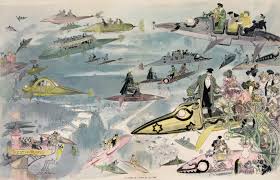
Inventions of daily life
Benjamin Franklin came up with a house improvement that ultimately modified the approach homes (and buildings in general) were created. Franklin detected that, whereas a heat supply radiates all told directions, fireplaces were engineered into walls. 0.5 the potential heat of the fireplace was thereby wasted. In 1740 Franklin resolved this downside by inventing a stove that weekday within the middle of the area. It had the additional advantage of being fabricated from forged iron, that absorbed heat in order that, even once the fuel was exhausted, it continued to heat the area for a while. astronomer (1732-1796) formed the Franklin stove by adding AN L-shaped chimney, that helped to vent the smoke and provided even additional area to radiate the warmth.
James Watt (1736-1819) developed a steam radiator in 1784 that provided uniform heat to his offices and eventually allowed heat, generated from a central supply, to be distributed throughout a building. on identical lines, varied inventors, together with Thompson (a.k.a. Benjamin Thompson, 1753-1814), developed change of state ranges. These devices allowed additional economical and manageable heating and change of state. Rumford devised different changes of state conveniences also, together with the double saucepan and java.
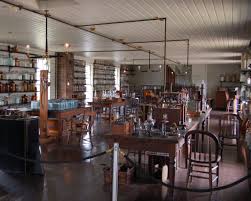
Inventions of daily life
The science of the 1700s semiconductor diode to the event of measurement systems and devices that hardly affected the daily lives of individuals then, however, square measure commonplace in most households these days. Gabriel physicist (1686-1736) fictional the mercury-in-glass thermometer in 1714. nice United Kingdom of Great Britain and Northern Ireland (and it's North yank colonies) adopted the Gregorian calendar in 1752. additionally, the system of weights and measures gained its initial foothold in revolutionary France in 1795 and was eventually adopted by scientists and most nations.
Inventions of daily life
An important step in industrial producing occurred in 1790, once Nicolas LeBlanc (1742-1806), a surgeon, fictional a method for manufacturing salt (soda ash or laundry soda), a vital ingredient within the manufacture of paper, glass, soap, and ceramic ware, from normal salt. At the time it absolutely was troublesome to provide salt in industrial quantities, and also the domain des Sciences offered a prize for the event of an inexpensive and reliable technique for manufacturing the chemical. LeBlanc won the competition, and, by 1791 a plant was operative manufacturing 320 plenty of salt p.a.. sadly, politics worked against him and also the French Revolution began before he might collect his prize. though the National Assembly granted him a 15-year patent on the method, the govt taken his plant a couple of years later. In 1802 Napoleon came the plant to LeBlanc, however, they gave him very little within the approach of compensation. Discouraged, broke, and unable to open his manufacturing plant, LeBlanc killed himself in 1806. notwithstanding, the method he discovered became the mainstay of the alkali trade and by 1885 it absolutely was being employed to provide quite four hundred,000 plenty of salt p.a.

Inventions of daily life
Hygiene received a much-needed advance with the primary major improvement within the potty since the invention of the "water closet" in 1596. In 1775 horologer Alexander Edward Estlin Cummings additional water entice to the exiting pipe, stopping odors from backing up into the area and creating indoor plumbing a far additional fascinating chance, though bogs were still extremely unsanitary affairs. Samuel Prosser fictional the plunger closet 2 years later, and in 1778, Joseph Bramah place a hinged valve at rock bottom of the bowl, and proprietary a float and valve flushing system that's still used these days. Another century would progress, however, before the fashionable rest room created its debut.
A number of inventions came along to make the newspapers and magazines we all know these days. Paper was made of pulp for the primary time in 1719, and also the initial paper-making machine was fictional in 1798 by Joe Louis Henry M. Robert. The three-color writing was developed in 1710 and stereotyping, that permissible mass printing from sturdy plates was fictional in 1725. For reporters, the character-at-a-time printer was fictional in 1714, however, it absolutely was not a sensible various throughout the eighteenth century. Of direct profit to reporters, however, were the replacement of quills with steel-pointed pens (1780) and also the invention of the implement (1770).
The new printing techniques conjointly created homes additional engaging by creating wallpaper and ornamental prints reasonable. Another invention that was to become a fixture of lower-middle-class living rooms, the piano, was developed in 1709 by Bartolomeo Cristofori (1655-1731). the foremost fashionable variety of public art within the nineteenth century, the panorama, was created in 1789 by Henry M. Robert Barker. It consisted of a series of paintings that absolutely encircled the viewer, providing a 360-degree read. Panoramas, that ab initio showed audiences views of the cities within which they lived, was a moment hit, drawing massive crowds. once they became traveling exhibits, panoramas offered the overall public its initial visual experiences of foreign lands.
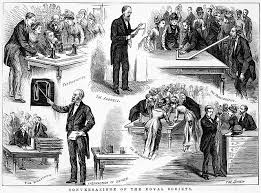
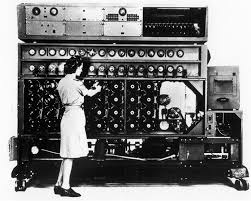
Inventions of daily life
Most of the forms of measurement developed in the eighteenth century are still with us. The Gregorian calendar, tuned to fractions of a second, is the worldwide standard for almost everything but religious or cultural activities. The thermometer, now a standard device, usually measures temperature in degrees Celsius, rather than Fahrenheit. Globally, the metric system today has only a few holdouts, most notably the United States. Many Americans, from auto mechanics to scientists, however, have been forced to become fluent in metric measurements.
With the new affordability of paper, newspapers and pamphlets became a force of the revolution and popular government. In the Colonies, Thomas Paine's pamphlet "Common Sense" fired a revolution, and the Federalist Papers, published as weekly installments in newspapers, helped win public support for the U.S. Constitution. In 1807 English engineers improved Robert's papermaking machine, making it a practical reality. Inexpensive printing also increased general literacy and provided a vehicle for advertising that helped create markets for the products of the Industrial Revolution. Despite regular predictions of a "paperless office," both commercial and private use of paper increases each year. Indeed, computers are sold with printers, encouraging the use of paper as an essential adjunct to the "virtual world." While electronic publishing has made some inroads, paper's "form factors" (portability, "view-ability," ease of markup) make it indispensable. There are even pilot projects aimed at making paper and pens part of the electronic environment: the text of posters coated with electronic ink can be changed using pagers; and pens have been designed that broadcast their movements on paper to computers, allowing for the automatic capture of drawn images and text.
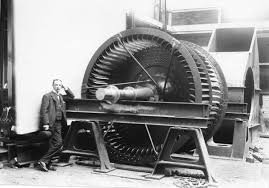
Inventions of daily life
The role of images also grew. Today, even the humblest households are decorated with posters and art. The motion picture has its roots in the eighteenth-century panorama, which has been called the first mass medium. The panorama's popularity continued throughout the nineteenth century and, with the addition of movement and music, came to resemble movies more and more as time went on. Popular images of foreign lands, historical events, and myths were formed by the panoramas, which traveled the world and earned their owners fortunes. While panoramas went out of vogue by 1900, they still exist in museums and art galleries. Walt Disney World, for example, has featured a popular multimedia panorama for more than a decade. The term "panorama" itself, coined by Barker, still survives, and a whole new genre of Internet panoramas has emerged in recent years.
Mainstays of popular culture, including soda, trading cards, printed T-shirts, ballpoint pens, greeting cards, coffee bars, and bumper stickers, all have their roots in the 1700s. To a time traveler from 1799, they might seem confusing but they would not be unrecognizable. In the eighteenth century, as the ranks of city dwellers and wage earners swelled, and the public sought the amusement and comforts that we expect today, their society began to resemble our own.
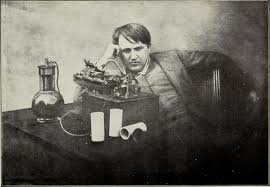
2. Battery (Electric) -Alessandro Volta
3. Bifocal Lens -Benjamin Franklin
4. Carburetor -Gottlieb Daimler
5. Car Radio -William Lear
6. Cinema -Nicolas & Jean Lumiere
7. Computer -Dr. Alan M. Tuning
8. Electric Fan -Wheeler
9. Fountain Pen -Waterman
10.Microphone -Alexander Graham Bell
11. Microwave Oven -Percy J. Spencer
12. Refrigeration -James Harrison
13. Safety Match -John Walker
14. Safety pin -Walter Hunt
15. Television -JL Baird
16. Transistor -Bardeen Shockley
17. Washing Machine -Hurley Machine
18. Watch -Bartholomew Manfredi
***INVENTIONS OF DAILY LIFE***
( For the preparation of competitive exams & govt exams )
GK for competitive exams-Inventions of daily lifeINVENTIONS OF DAILY LIFE
Inventions of daily life
Inventors within the eighteenth century worked to form life easier. writer (1706-1790) introduced central eyeglasses and a stove that warm a full area. The three-color print method and wood-pulp paper brought North American country newspapers, magazines, and wallpaper. The piano was fictional so was java. Joseph Priestley (1733-1804) gave North American country soda water. a preferred appetence for comfort, convenience, and amusement was created that has come back to dominate the populations of developed countries, each culturally and economically.
Background
Daily life these days is jam-packed with little comforts and conveniences that originated within the eighteenth century. a number of these, like Franklin's bifocals, stemmed from personal wants. Others, like Joseph Priestley's soda water, as an example, passed unintentionally, as byproducts of analysis. Moreover, clever entrepreneurs like Henry M. Robert Barker, United Nations agency fictional the panorama, consciously pursued the market opportunities that emerged in apace growing cities.
Inventions of daily life
Benjamin Franklin came up with a house improvement that ultimately modified the approach homes (and buildings in general) were created. Franklin detected that, whereas a heat supply radiates all told directions, fireplaces were engineered into walls. 0.5 the potential heat of the fireplace was thereby wasted. In 1740 Franklin resolved this downside by inventing a stove that weekday within the middle of the area. It had the additional advantage of being fabricated from forged iron, that absorbed heat in order that, even once the fuel was exhausted, it continued to heat the area for a while. astronomer (1732-1796) formed the Franklin stove by adding AN L-shaped chimney, that helped to vent the smoke and provided even additional area to radiate the warmth.
James Watt (1736-1819) developed a steam radiator in 1784 that provided uniform heat to his offices and eventually allowed heat, generated from a central supply, to be distributed throughout a building. on identical lines, varied inventors, together with Thompson (a.k.a. Benjamin Thompson, 1753-1814), developed change of state ranges. These devices allowed additional economical and manageable heating and change of state. Rumford devised different changes of state conveniences also, together with the double saucepan and java.
Inventions of daily life
The science of the 1700s semiconductor diode to the event of measurement systems and devices that hardly affected the daily lives of individuals then, however, square measure commonplace in most households these days. Gabriel physicist (1686-1736) fictional the mercury-in-glass thermometer in 1714. nice United Kingdom of Great Britain and Northern Ireland (and it's North yank colonies) adopted the Gregorian calendar in 1752. additionally, the system of weights and measures gained its initial foothold in revolutionary France in 1795 and was eventually adopted by scientists and most nations.
Inventions of daily life
An important step in industrial producing occurred in 1790, once Nicolas LeBlanc (1742-1806), a surgeon, fictional a method for manufacturing salt (soda ash or laundry soda), a vital ingredient within the manufacture of paper, glass, soap, and ceramic ware, from normal salt. At the time it absolutely was troublesome to provide salt in industrial quantities, and also the domain des Sciences offered a prize for the event of an inexpensive and reliable technique for manufacturing the chemical. LeBlanc won the competition, and, by 1791 a plant was operative manufacturing 320 plenty of salt p.a.. sadly, politics worked against him and also the French Revolution began before he might collect his prize. though the National Assembly granted him a 15-year patent on the method, the govt taken his plant a couple of years later. In 1802 Napoleon came the plant to LeBlanc, however, they gave him very little within the approach of compensation. Discouraged, broke, and unable to open his manufacturing plant, LeBlanc killed himself in 1806. notwithstanding, the method he discovered became the mainstay of the alkali trade and by 1885 it absolutely was being employed to provide quite four hundred,000 plenty of salt p.a.
Inventions of daily life
Hygiene received a much-needed advance with the primary major improvement within the potty since the invention of the "water closet" in 1596. In 1775 horologer Alexander Edward Estlin Cummings additional water entice to the exiting pipe, stopping odors from backing up into the area and creating indoor plumbing a far additional fascinating chance, though bogs were still extremely unsanitary affairs. Samuel Prosser fictional the plunger closet 2 years later, and in 1778, Joseph Bramah place a hinged valve at rock bottom of the bowl, and proprietary a float and valve flushing system that's still used these days. Another century would progress, however, before the fashionable rest room created its debut.
A number of inventions came along to make the newspapers and magazines we all know these days. Paper was made of pulp for the primary time in 1719, and also the initial paper-making machine was fictional in 1798 by Joe Louis Henry M. Robert. The three-color writing was developed in 1710 and stereotyping, that permissible mass printing from sturdy plates was fictional in 1725. For reporters, the character-at-a-time printer was fictional in 1714, however, it absolutely was not a sensible various throughout the eighteenth century. Of direct profit to reporters, however, were the replacement of quills with steel-pointed pens (1780) and also the invention of the implement (1770).
The new printing techniques conjointly created homes additional engaging by creating wallpaper and ornamental prints reasonable. Another invention that was to become a fixture of lower-middle-class living rooms, the piano, was developed in 1709 by Bartolomeo Cristofori (1655-1731). the foremost fashionable variety of public art within the nineteenth century, the panorama, was created in 1789 by Henry M. Robert Barker. It consisted of a series of paintings that absolutely encircled the viewer, providing a 360-degree read. Panoramas, that ab initio showed audiences views of the cities within which they lived, was a moment hit, drawing massive crowds. once they became traveling exhibits, panoramas offered the overall public its initial visual experiences of foreign lands.
Inventions of daily life
Some of the conveniences of the 1700s have been superseded: Rumford's double boilers may still be essential for gourmets, but most people now buy ready-made sauces and icings or use microwave ovens to melt butter and chocolate. Other inventions have continued to develop and improve. As early as 1802, the closed-top cast-iron cooking range began to replace earlier models. Mass production in the twentieth century lowered the price and extended the reach of conveniences, and electrical power made others, such as drip coffee, easier to enjoy. In the case of central heating and well-designed toilets, eighteenth-century innovations came to be required by law. But the largest effect of the influx of new gadgets was the stimulation of an appetite for more. Today, some of us have central cooling as well as heating. Our pens carry their own ink supplies and can be molded from soft materials that feel good in our hands. Bifocals, so common they have become an emblem of middle age, survive in stealth form as glasses with progressive lenses or as multifocal contact lenses. In our kitchens, electric or gas ranges are complemented by refrigerators and freezers. We also have minor gadgets we often feel we cannot live without, such as toasters, bread makers, food processors, waffle irons, and electric mixers.Inventions of daily life
Most of the forms of measurement developed in the eighteenth century are still with us. The Gregorian calendar, tuned to fractions of a second, is the worldwide standard for almost everything but religious or cultural activities. The thermometer, now a standard device, usually measures temperature in degrees Celsius, rather than Fahrenheit. Globally, the metric system today has only a few holdouts, most notably the United States. Many Americans, from auto mechanics to scientists, however, have been forced to become fluent in metric measurements.
With the new affordability of paper, newspapers and pamphlets became a force of the revolution and popular government. In the Colonies, Thomas Paine's pamphlet "Common Sense" fired a revolution, and the Federalist Papers, published as weekly installments in newspapers, helped win public support for the U.S. Constitution. In 1807 English engineers improved Robert's papermaking machine, making it a practical reality. Inexpensive printing also increased general literacy and provided a vehicle for advertising that helped create markets for the products of the Industrial Revolution. Despite regular predictions of a "paperless office," both commercial and private use of paper increases each year. Indeed, computers are sold with printers, encouraging the use of paper as an essential adjunct to the "virtual world." While electronic publishing has made some inroads, paper's "form factors" (portability, "view-ability," ease of markup) make it indispensable. There are even pilot projects aimed at making paper and pens part of the electronic environment: the text of posters coated with electronic ink can be changed using pagers; and pens have been designed that broadcast their movements on paper to computers, allowing for the automatic capture of drawn images and text.
Inventions of daily life
The role of images also grew. Today, even the humblest households are decorated with posters and art. The motion picture has its roots in the eighteenth-century panorama, which has been called the first mass medium. The panorama's popularity continued throughout the nineteenth century and, with the addition of movement and music, came to resemble movies more and more as time went on. Popular images of foreign lands, historical events, and myths were formed by the panoramas, which traveled the world and earned their owners fortunes. While panoramas went out of vogue by 1900, they still exist in museums and art galleries. Walt Disney World, for example, has featured a popular multimedia panorama for more than a decade. The term "panorama" itself, coined by Barker, still survives, and a whole new genre of Internet panoramas has emerged in recent years.
Mainstays of popular culture, including soda, trading cards, printed T-shirts, ballpoint pens, greeting cards, coffee bars, and bumper stickers, all have their roots in the 1700s. To a time traveler from 1799, they might seem confusing but they would not be unrecognizable. In the eighteenth century, as the ranks of city dwellers and wage earners swelled, and the public sought the amusement and comforts that we expect today, their society began to resemble our own.
GK Question & answers on the topic: Inventions of daily life
1. Ball Point pen -John.J. Loud2. Battery (Electric) -Alessandro Volta
3. Bifocal Lens -Benjamin Franklin
4. Carburetor -Gottlieb Daimler
5. Car Radio -William Lear
6. Cinema -Nicolas & Jean Lumiere
7. Computer -Dr. Alan M. Tuning
8. Electric Fan -Wheeler
9. Fountain Pen -Waterman
10.Microphone -Alexander Graham Bell
11. Microwave Oven -Percy J. Spencer
12. Refrigeration -James Harrison
13. Safety Match -John Walker
14. Safety pin -Walter Hunt
15. Television -JL Baird
16. Transistor -Bardeen Shockley
17. Washing Machine -Hurley Machine
18. Watch -Bartholomew Manfredi
***INVENTIONS OF DAILY LIFE***
Comments
Post a Comment
please do not enter any spam link in the comment box.